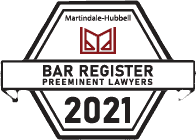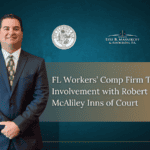The five step sequential process is a series of five steps followed in order to determine disability by the Social Security Administration (SSA). If disability is proved or denied at any step, there is no reason to continue to the next step.
Step One – Not Working
At the first step you are also required to show that you are not working above Substantial Gainful Activity (SGA). In 2012, if you are working and your earnings average more than $1010 per month, you generally cannot be considered disabled and will be denied at Step 1.
Step Two – Severity
At Step 2 you must determine if the condition is “severe”. Your condition must interfere with basic work-related activities for your claim to be considered. If your conditions are not severe, Social Security will deny you at Step 2. If your condition does interfere with basic work-related activities but is severe, Social Security will proceed to Step 3.
Step Three – The List
 Step 3 determines if your condition can be found in the List of disabling conditions (the Listings)? For each major body system The Social Security maintains a list of medical conditions so severe that they automatically mean you are disabled. For each
Step 3 determines if your condition can be found in the List of disabling conditions (the Listings)? For each major body system The Social Security maintains a list of medical conditions so severe that they automatically mean you are disabled. For each
Impairment, you must meet every requirement under the Listing to be automatically found disabled at Step 3. If you meet every requirement of the listing, you are automatically approved at Step 3. There is no need to move forward to Steps 4 or 5. If your condition is not on the list, or you do not meet every requirement under a particular Listing, Social Security will determine if your impairment is of equal severity to the medical condition that is on the list. This is referred to as “equaling a Listing.” Generally, Social Security will require a statement from a medical provider or consultative examiner that you “equal” a Listing. If you “equal” a Listing, you will be found disabled at Step 3 and there is no need to proceed to Steps 4 or 5.
If you do not meet or equal a listing, Social Security will proceed to Step 4.
Step Four – Past Work
Step 4 evaluates if can you perform your past relevant work. Past relevant work is work you performed in the past fifteen years that involved significant and productive physical or mental activities for pay or for profit, and you performed the work long enough to learn how to do it. If Social Security determines you can still perform your past work as you actually performed it, they will find you not disabled at Step 4. If Social Security determines you are not physically or mentally able to perform any of your past relevant work, either as you performed it or as it is performed in the national economy, Social Security will proceed to Step 5.
Step Five – Can You Work
Step 5 determines if you can you perform any other type of work? If you cannot perform your past relevant work, Social Security will determine whether you are able to adjust to other work. In making this determination, Social Security will consider your age, education, past work experience, any transferable skills from that work. Typically, the older the claimant, the less Social Security will find they can adjust to other work.
























